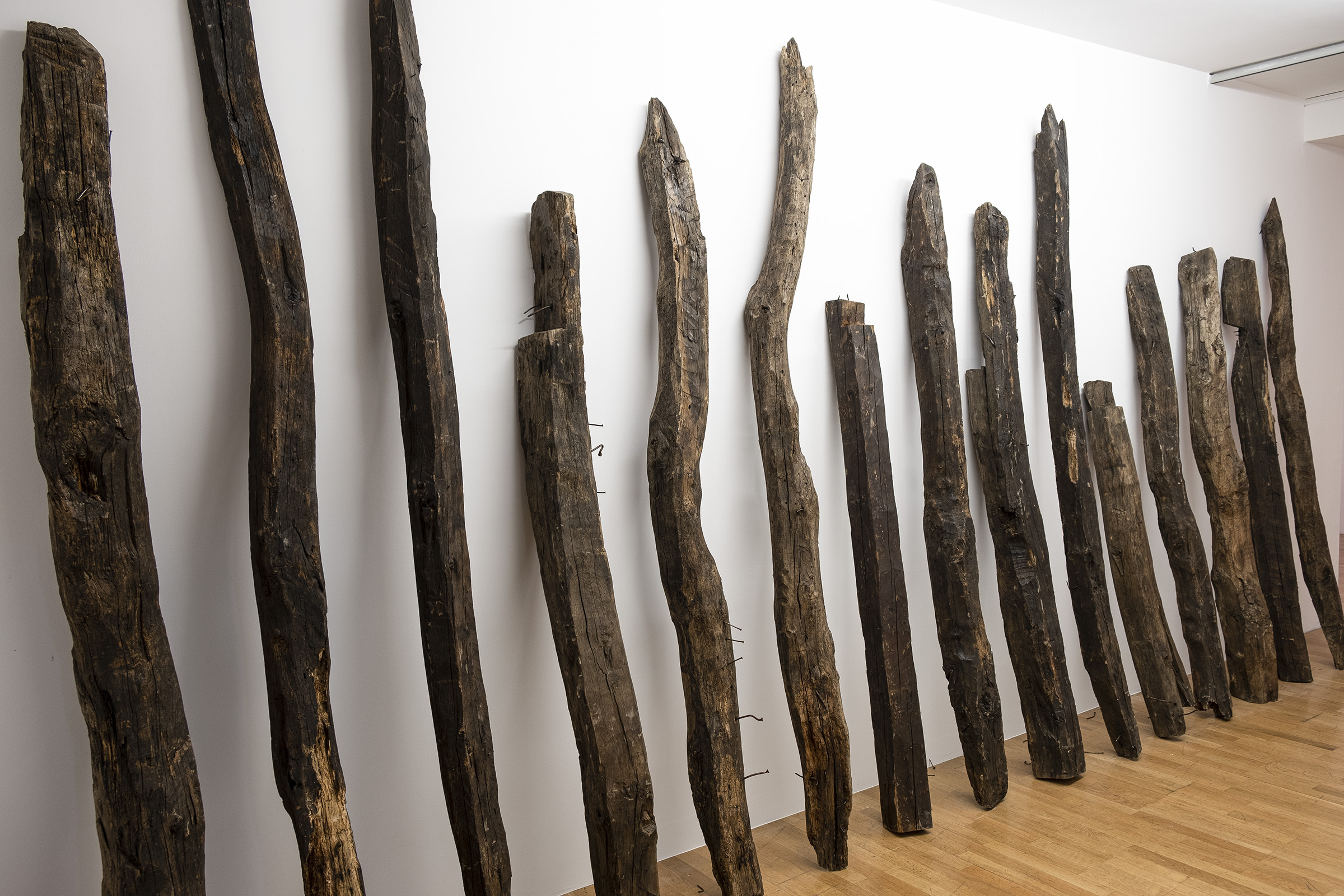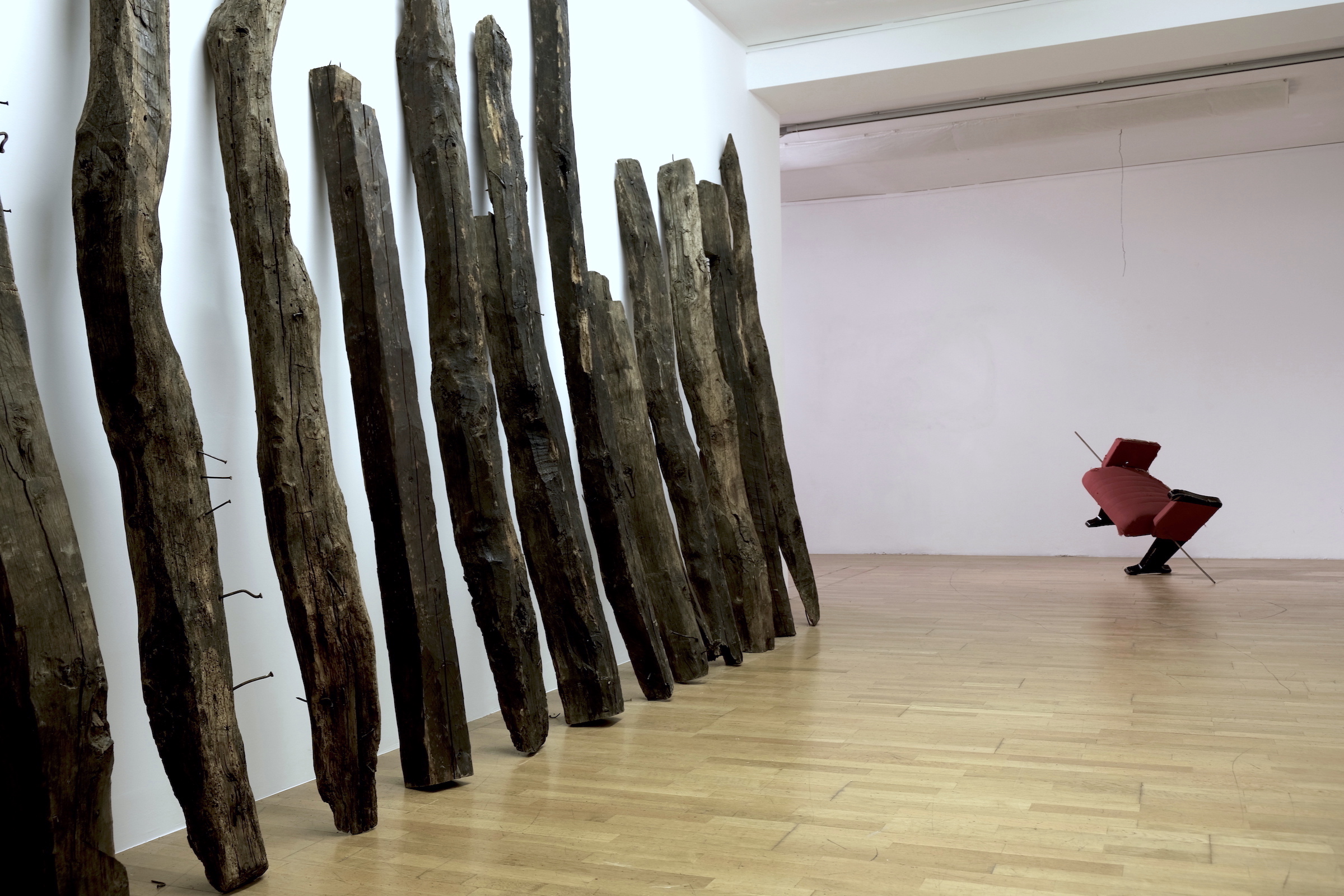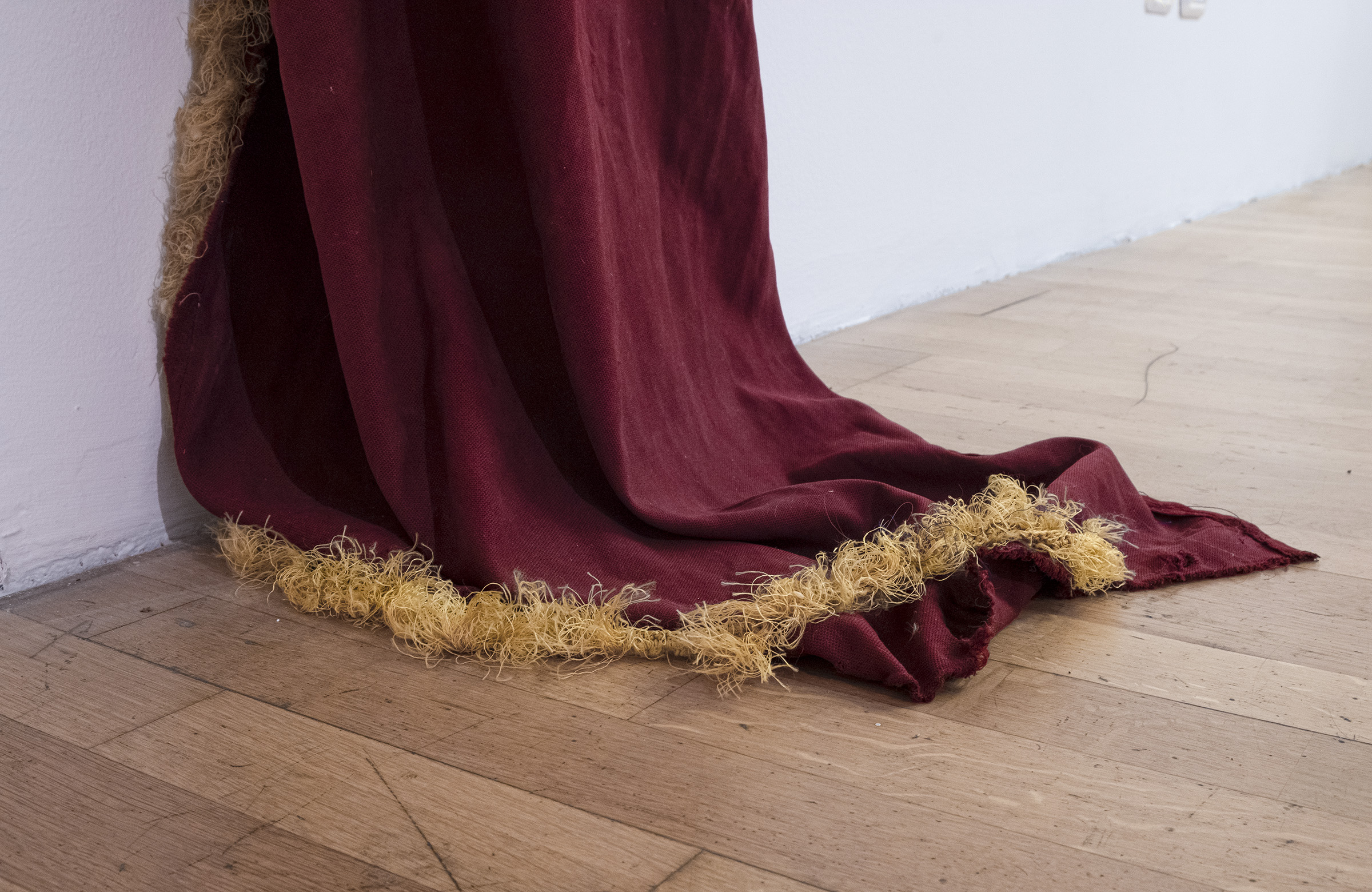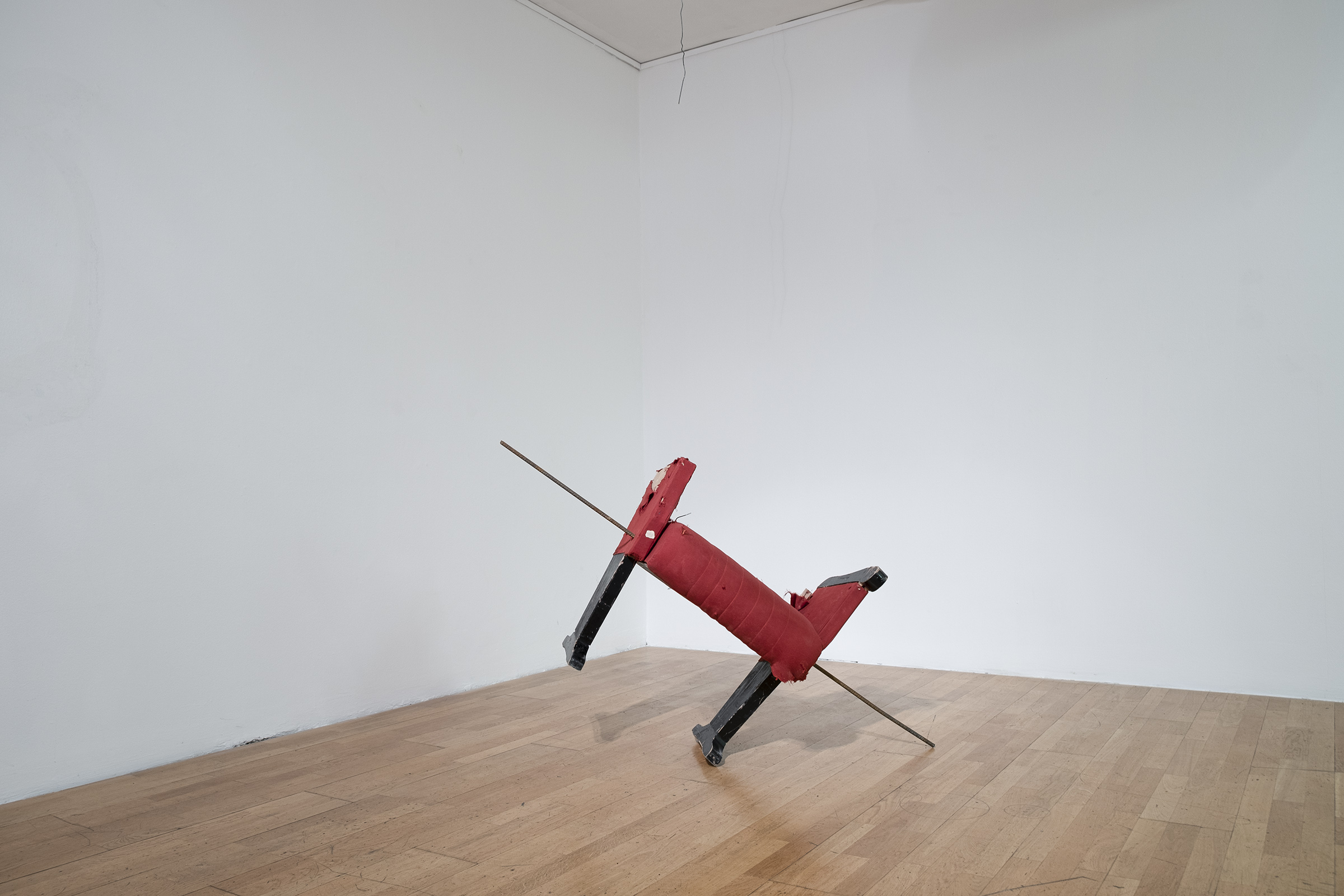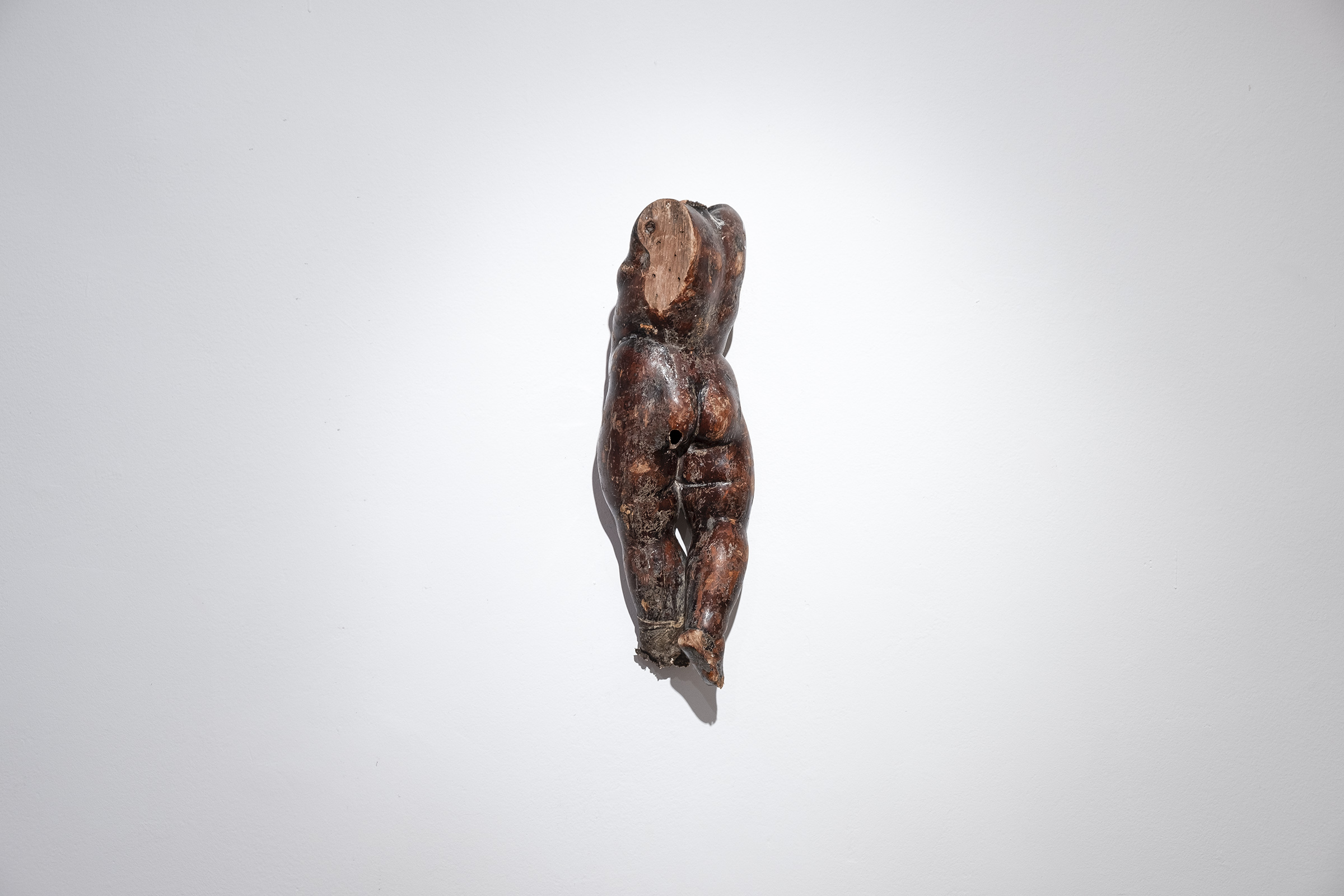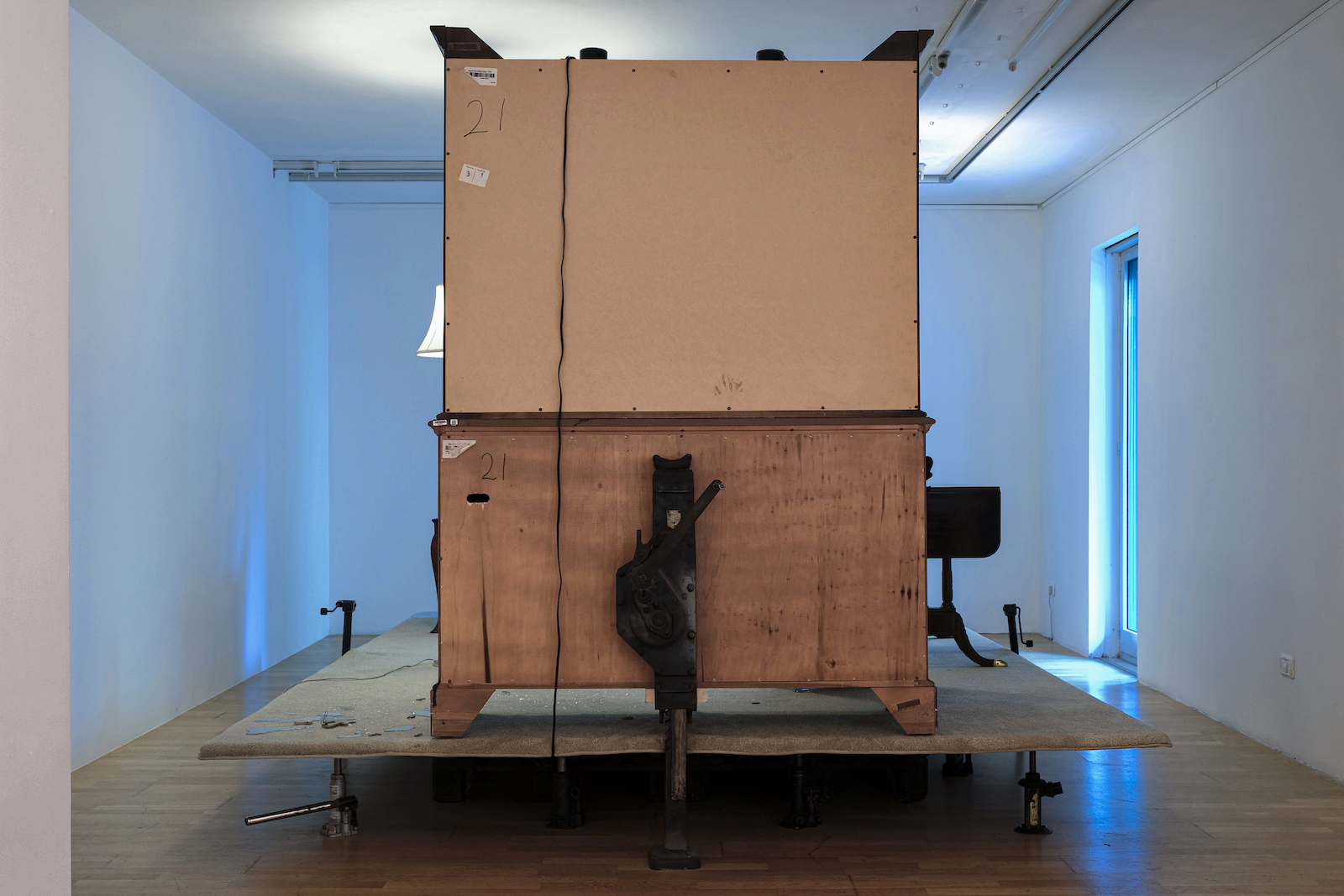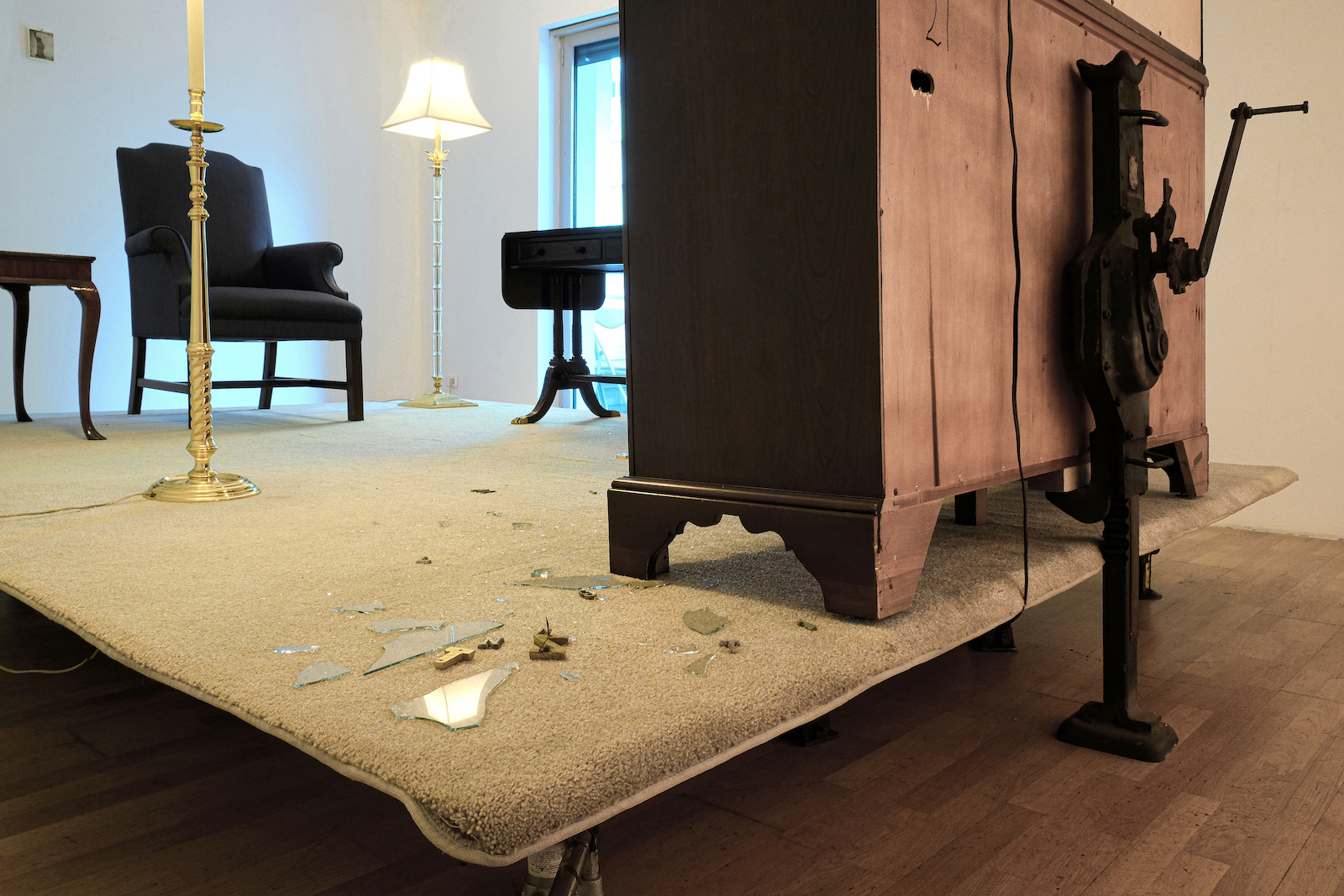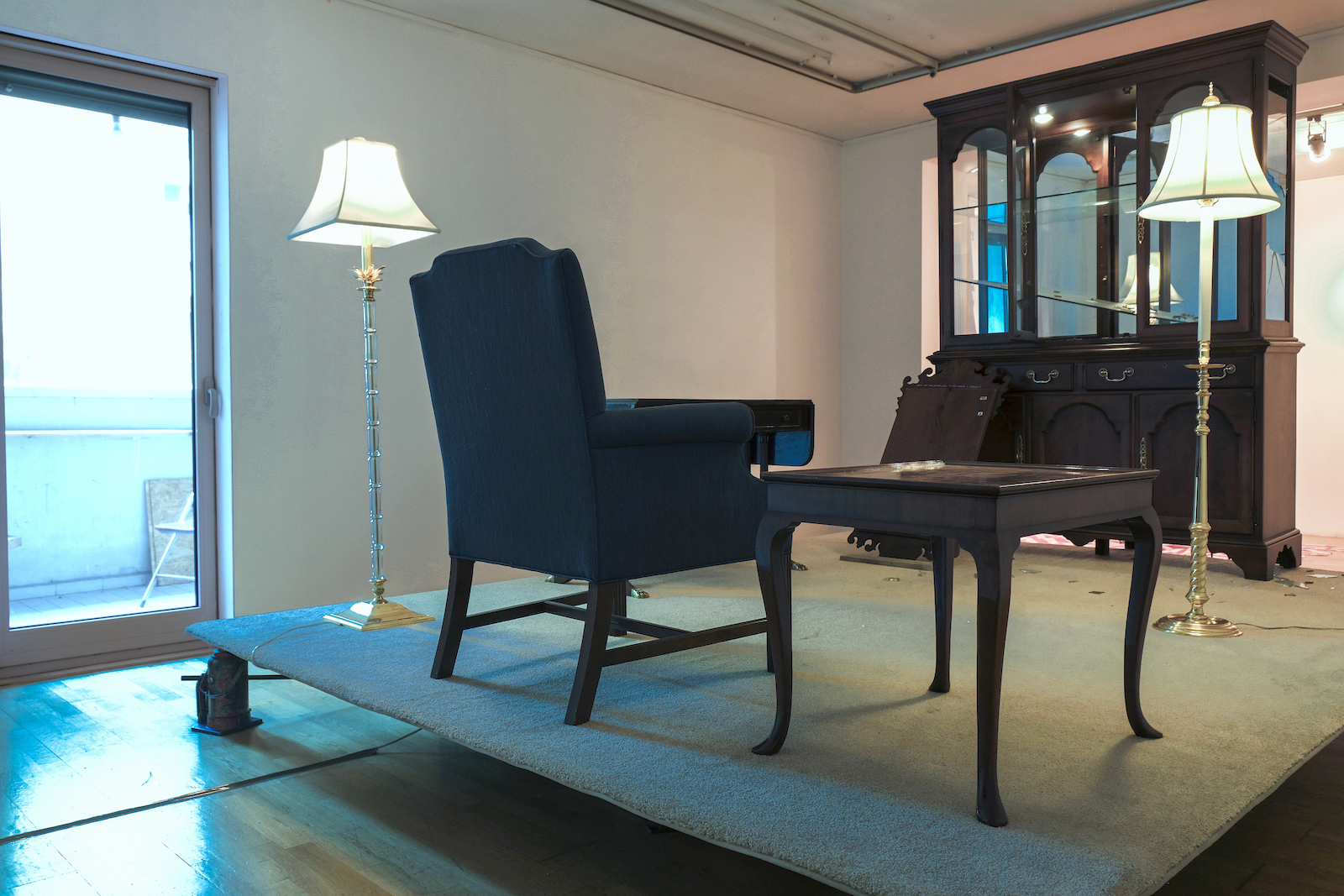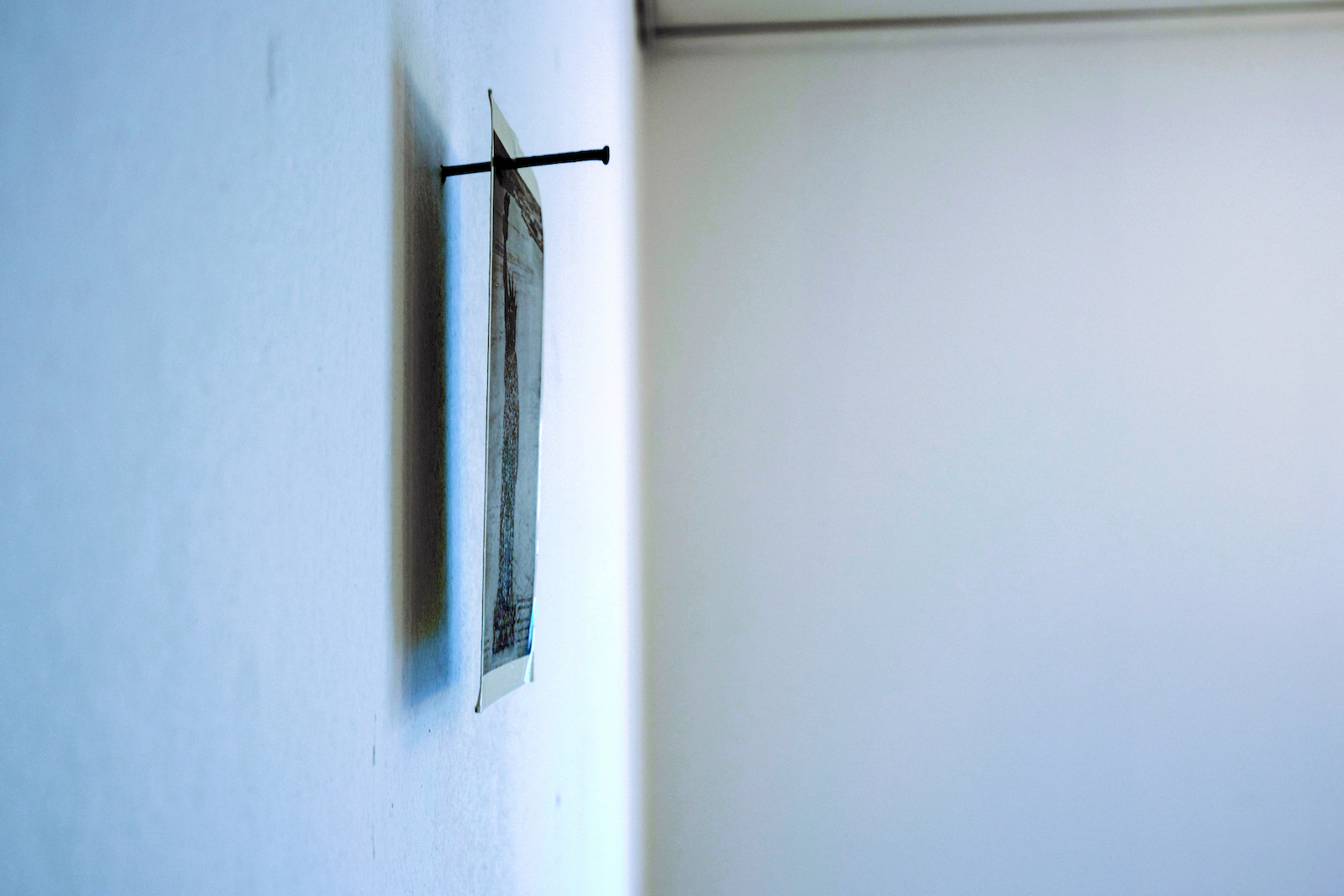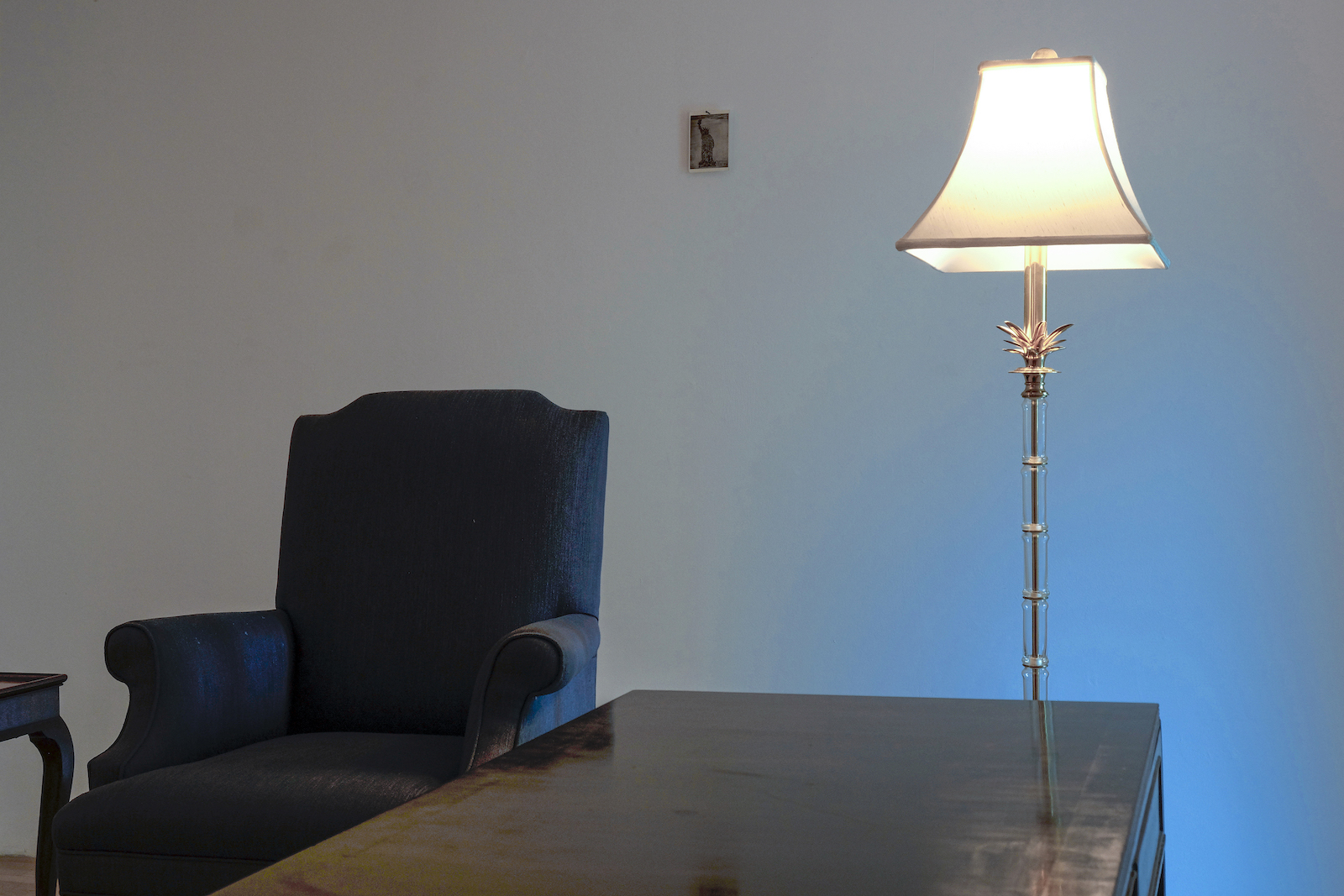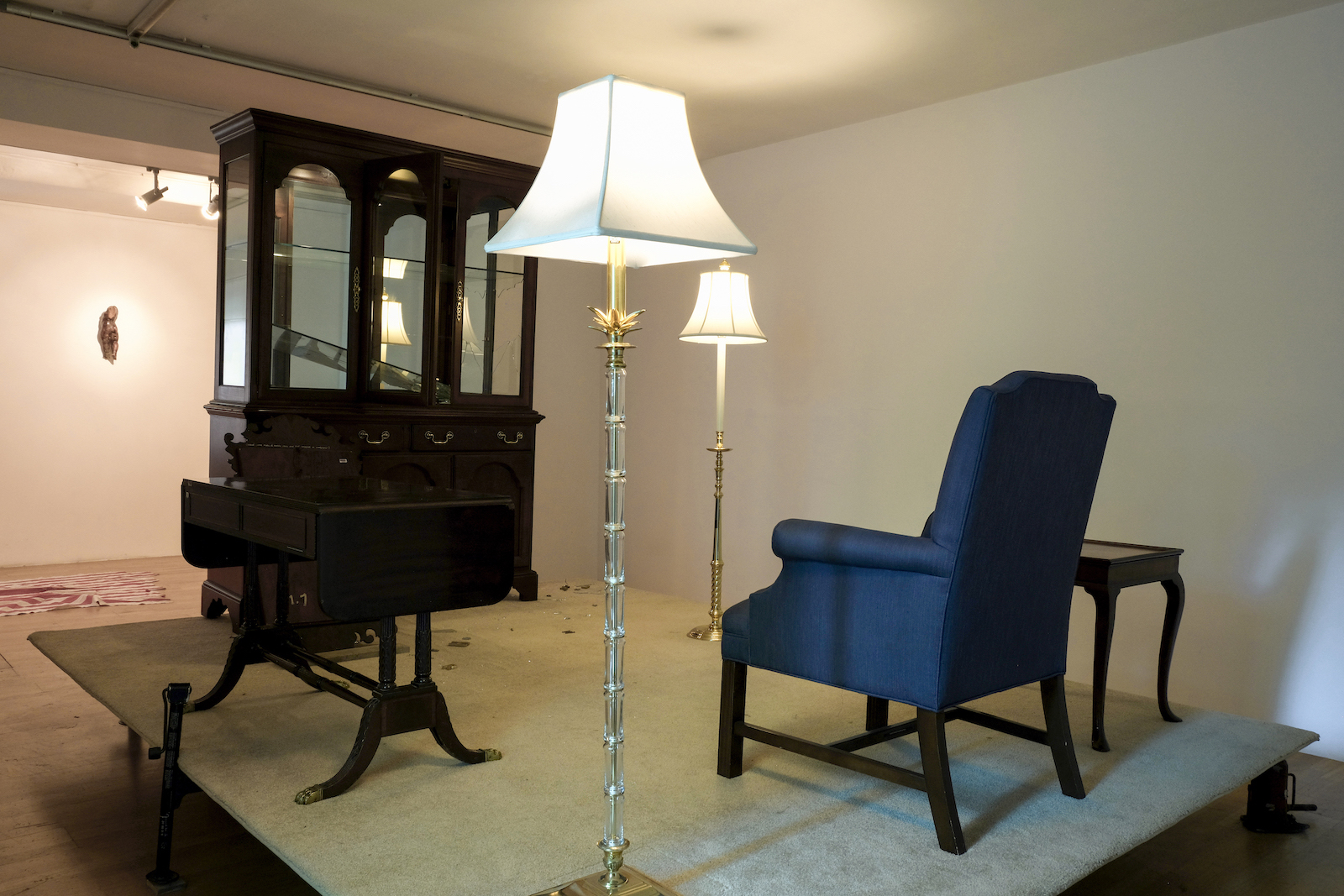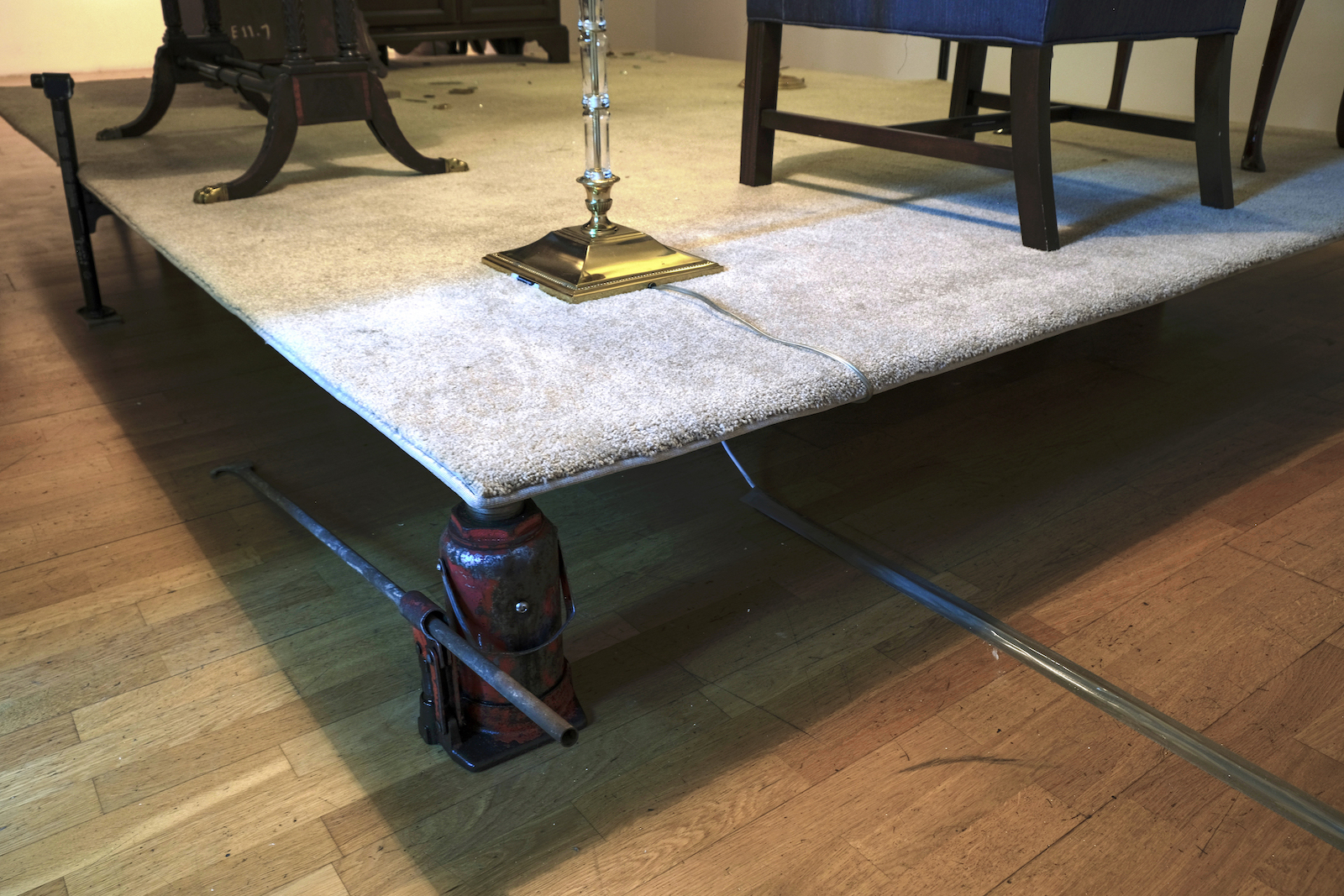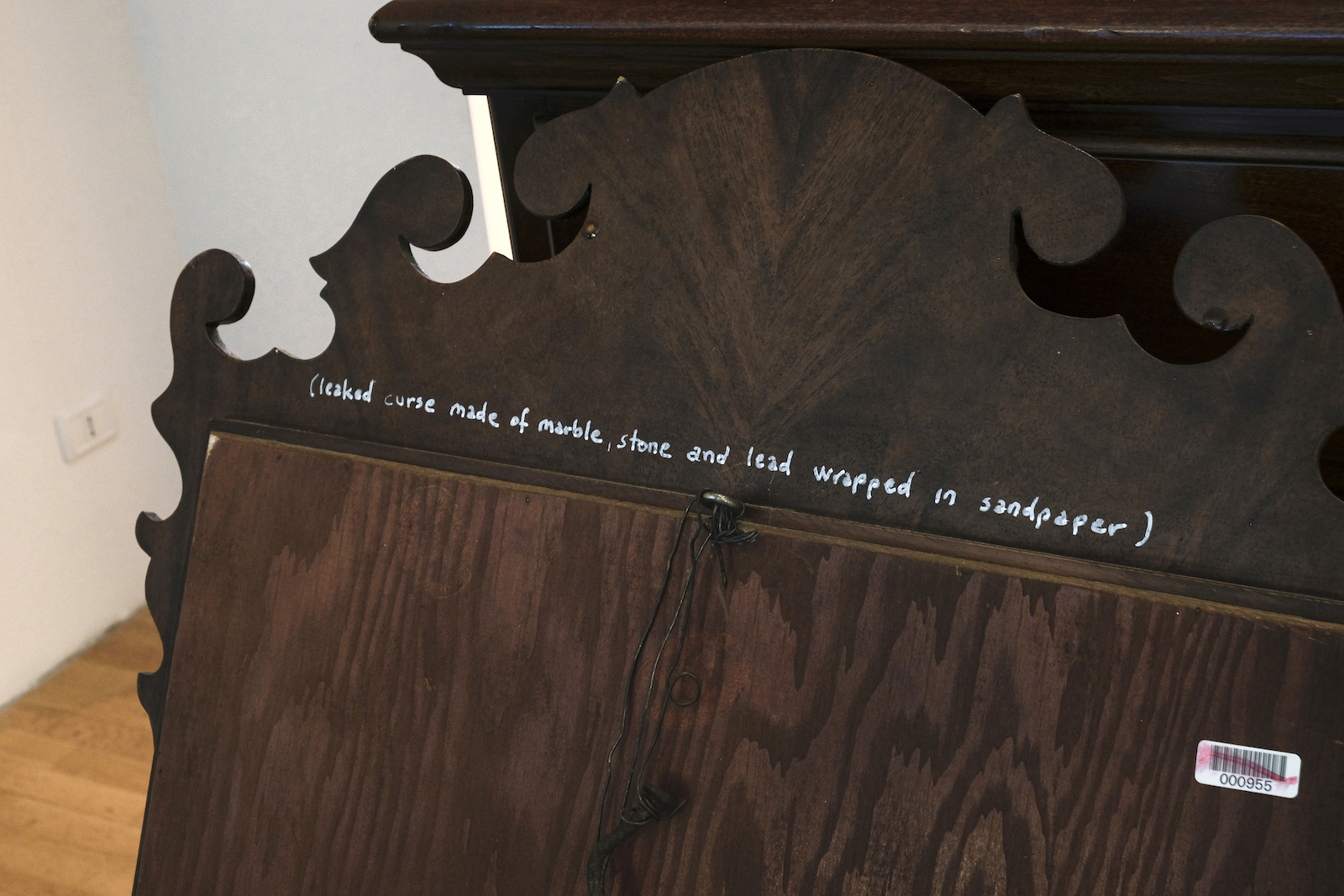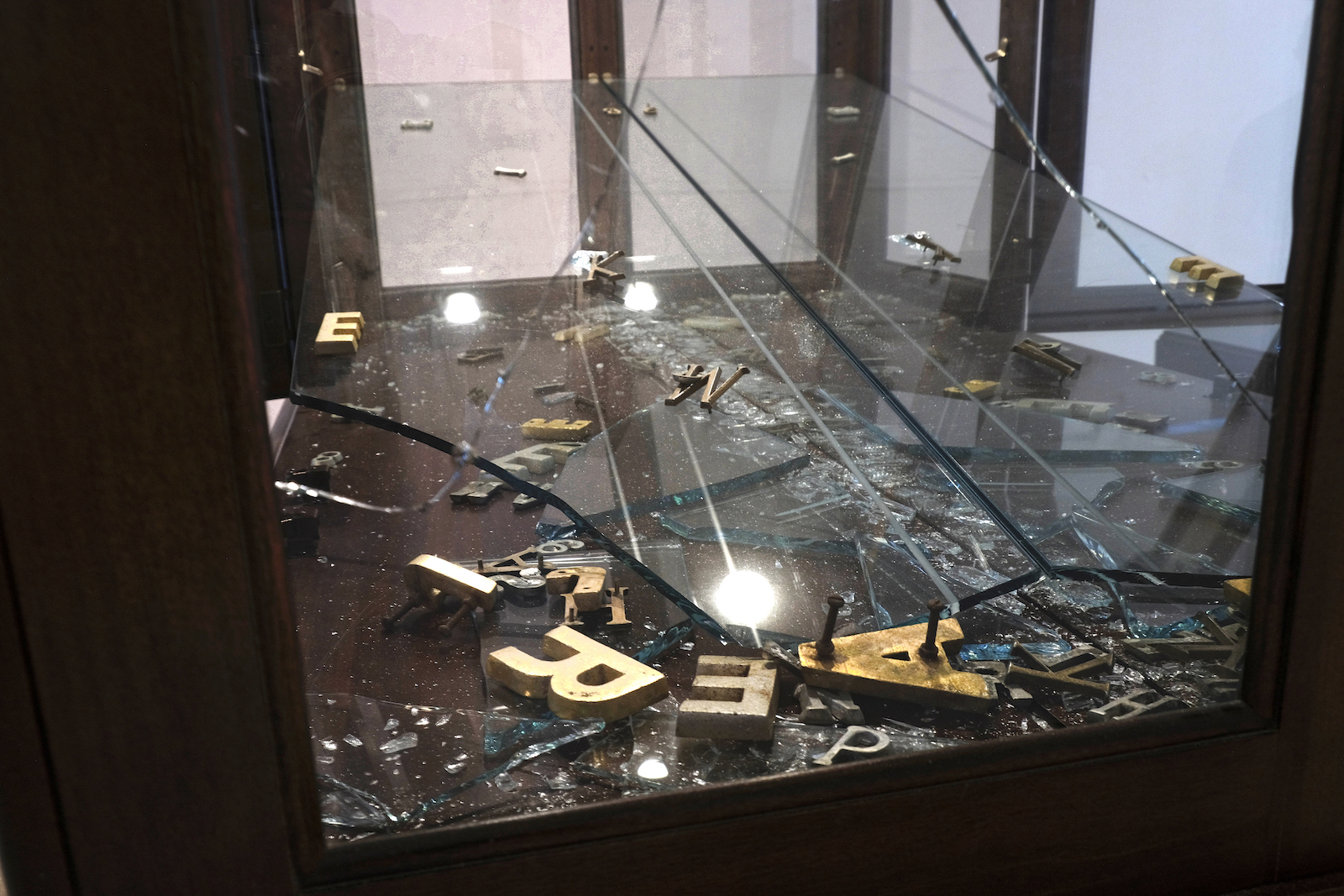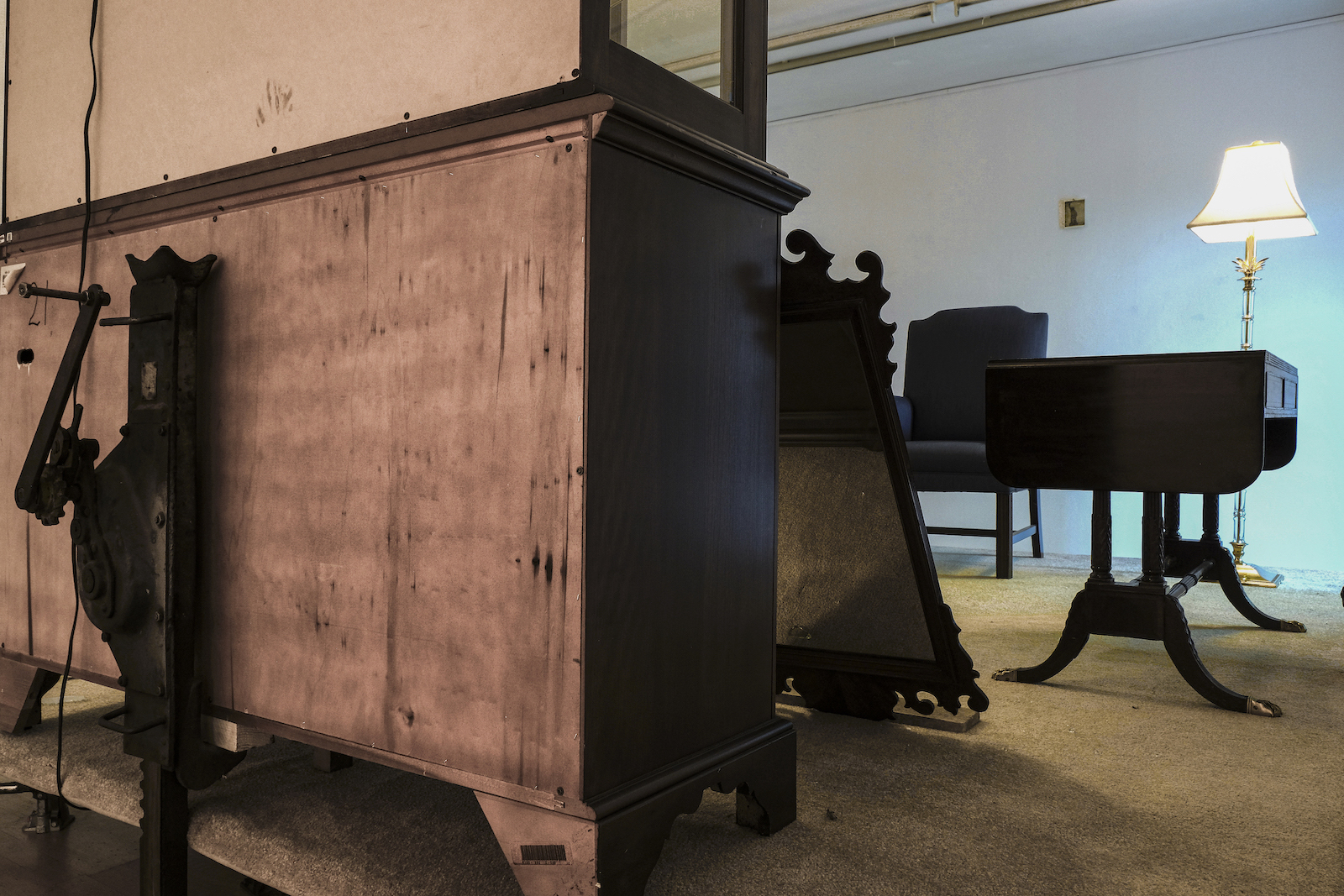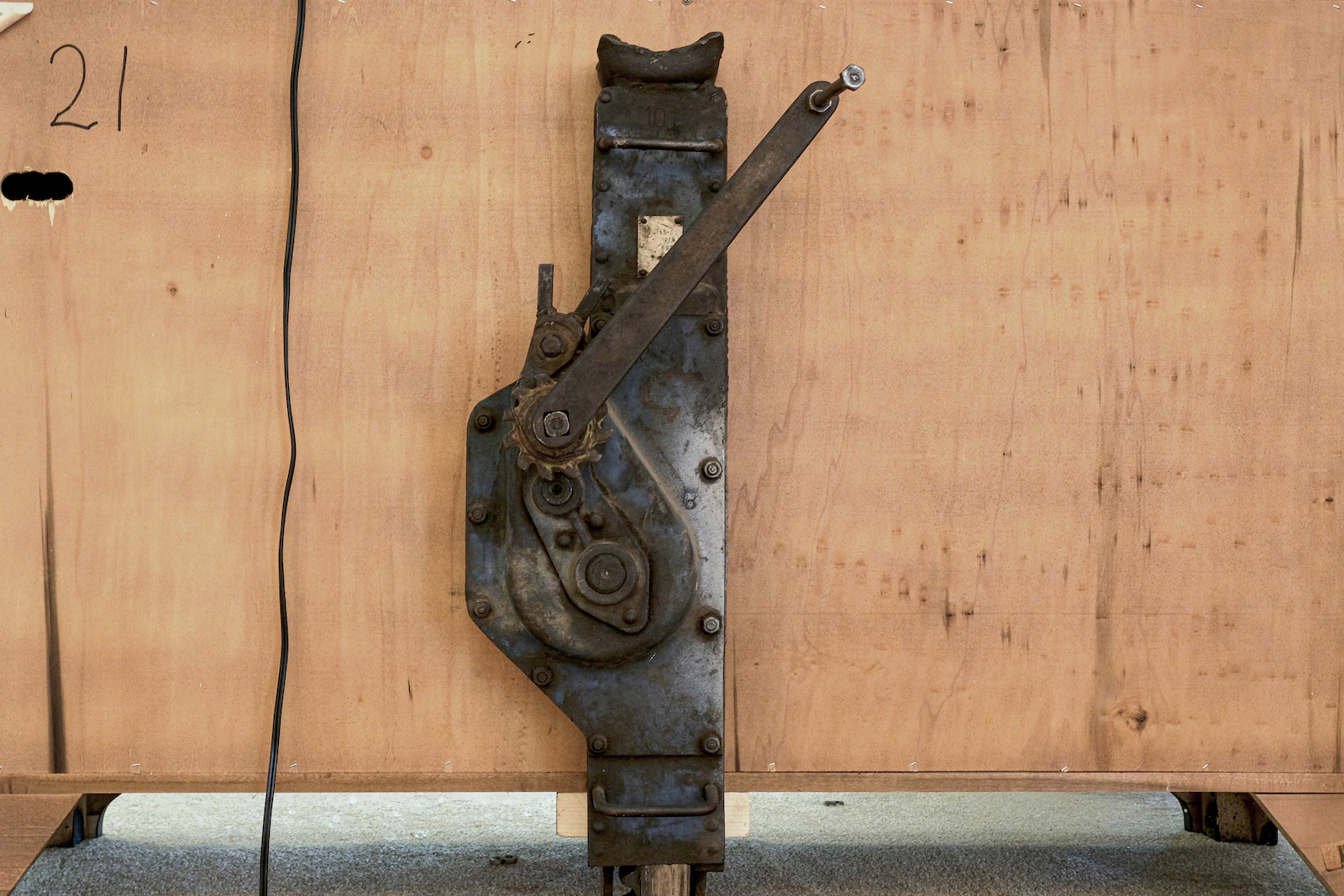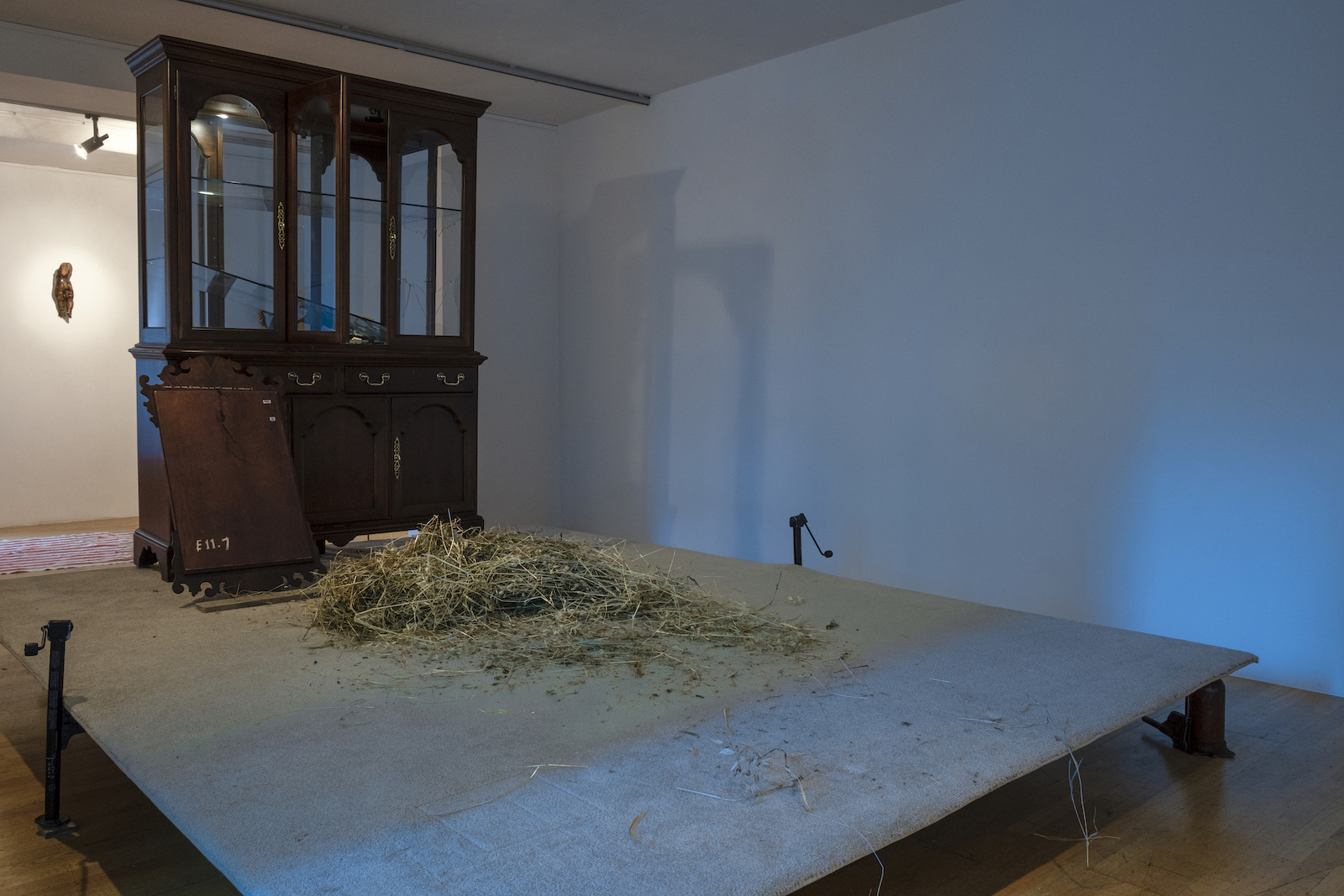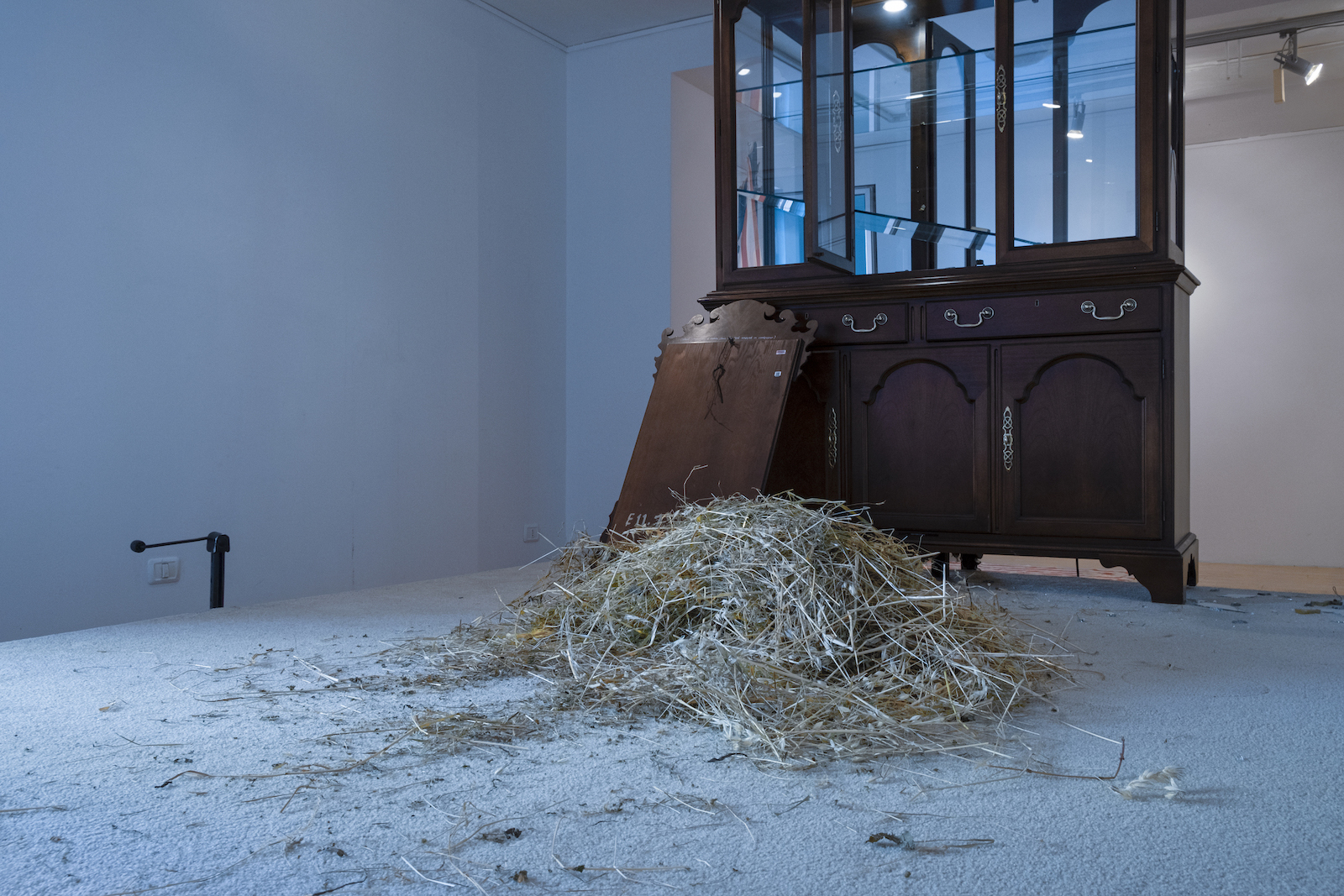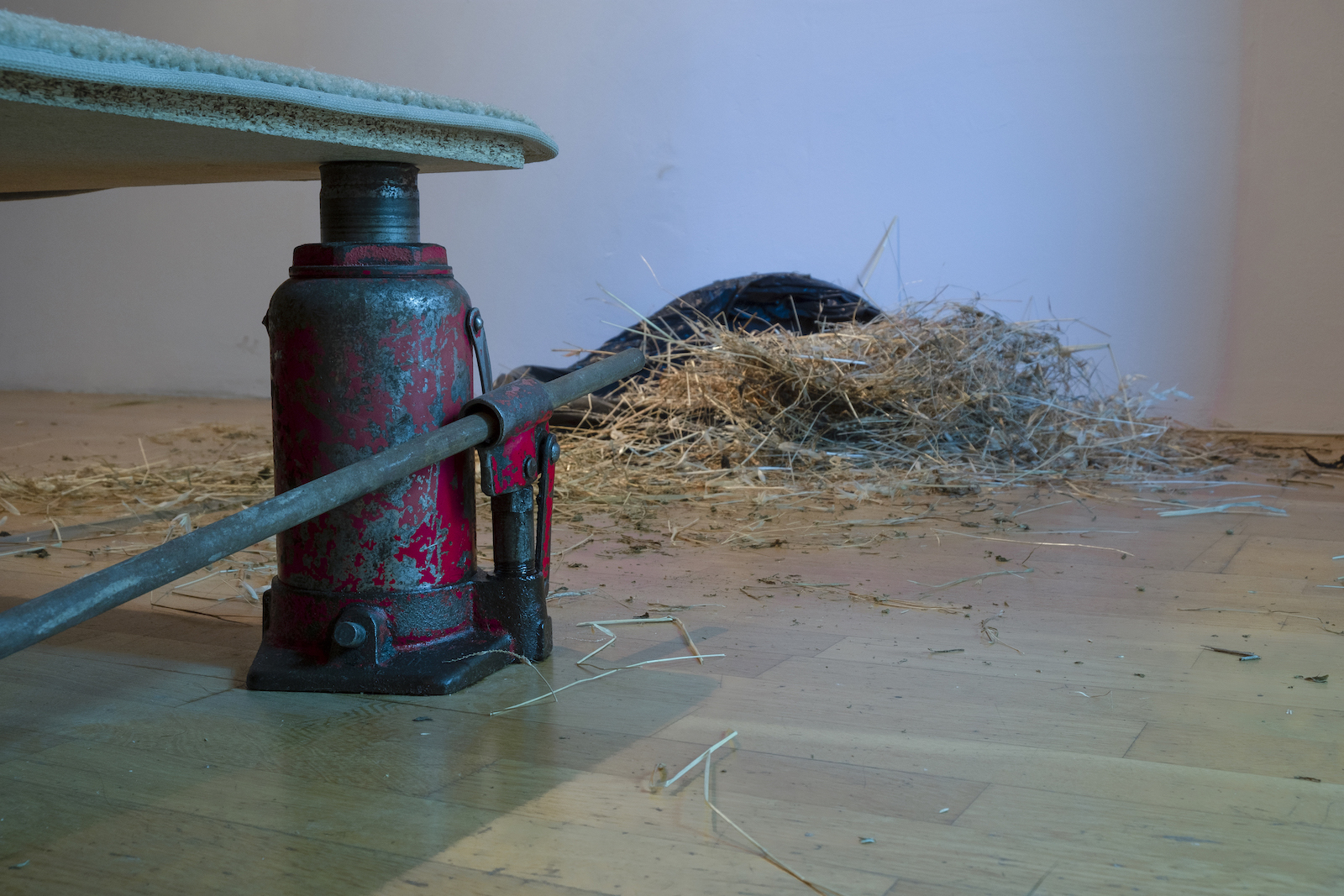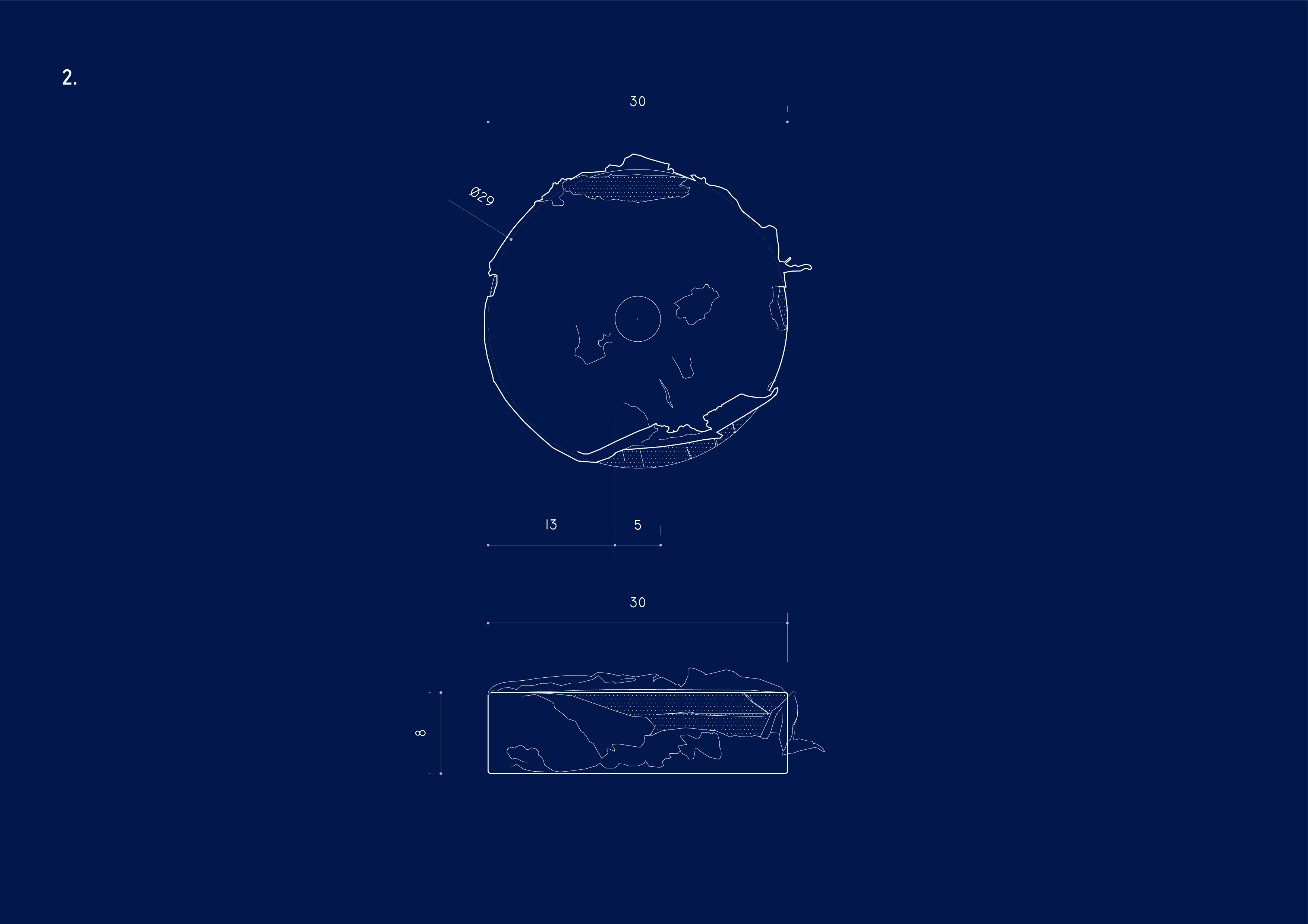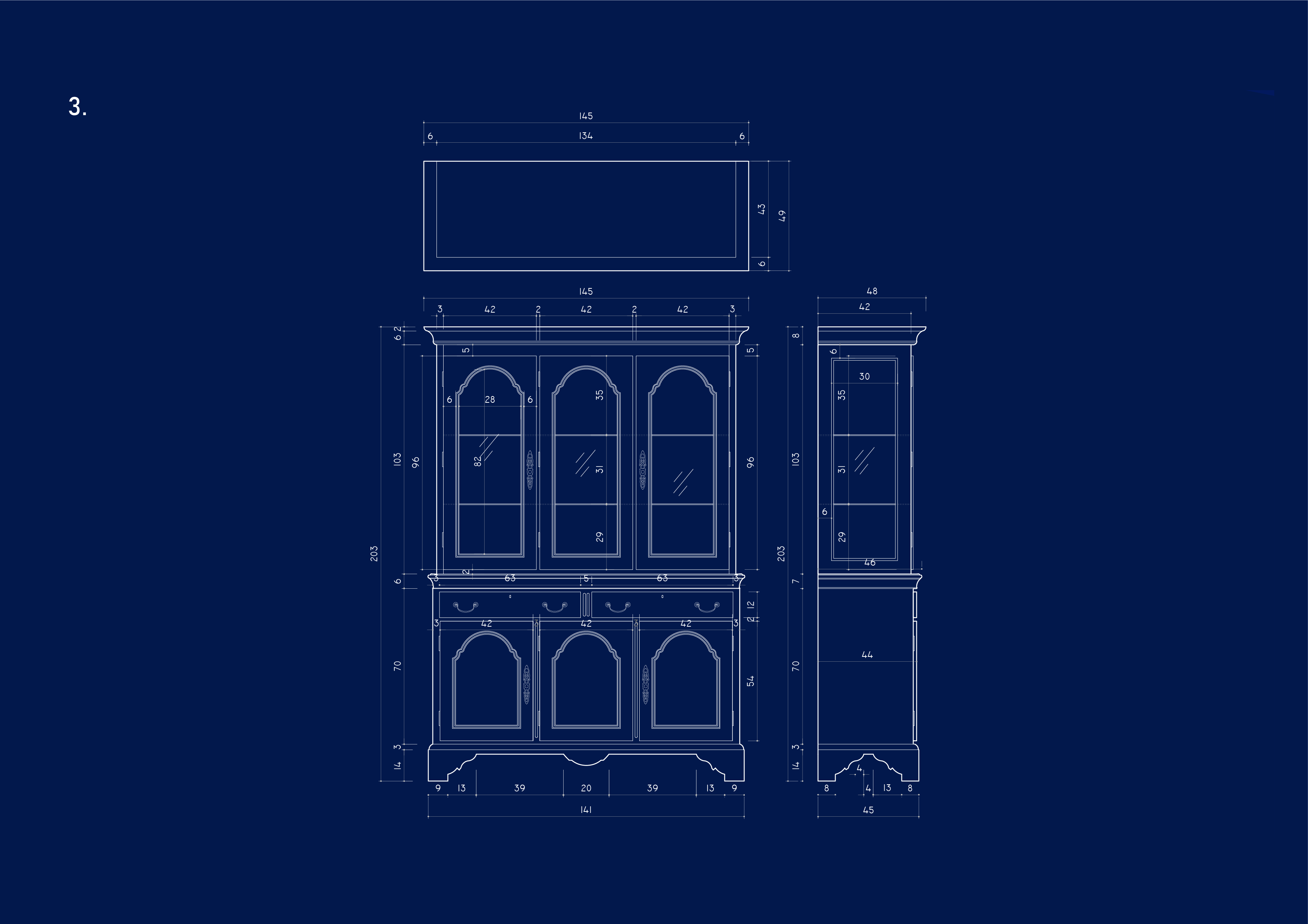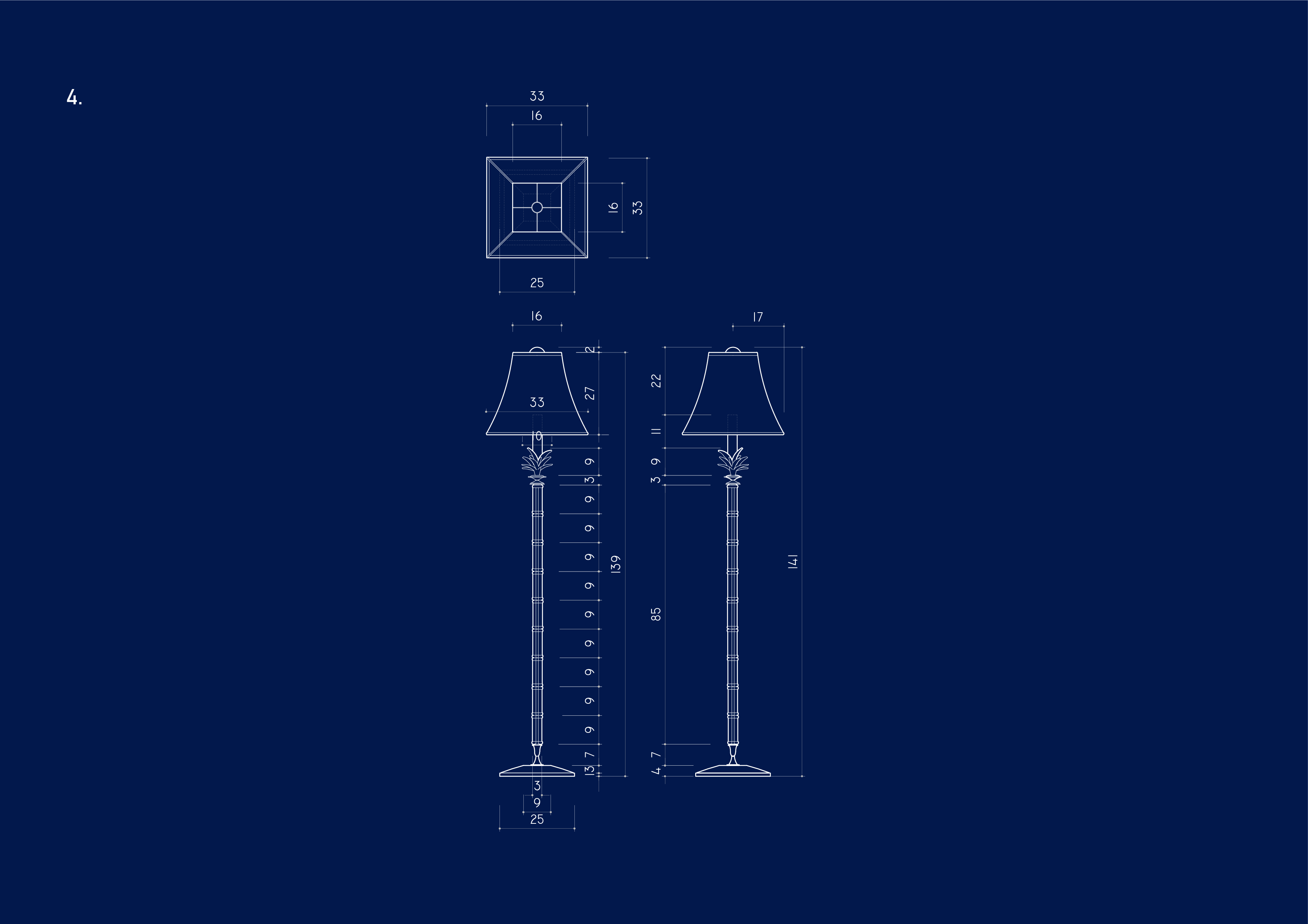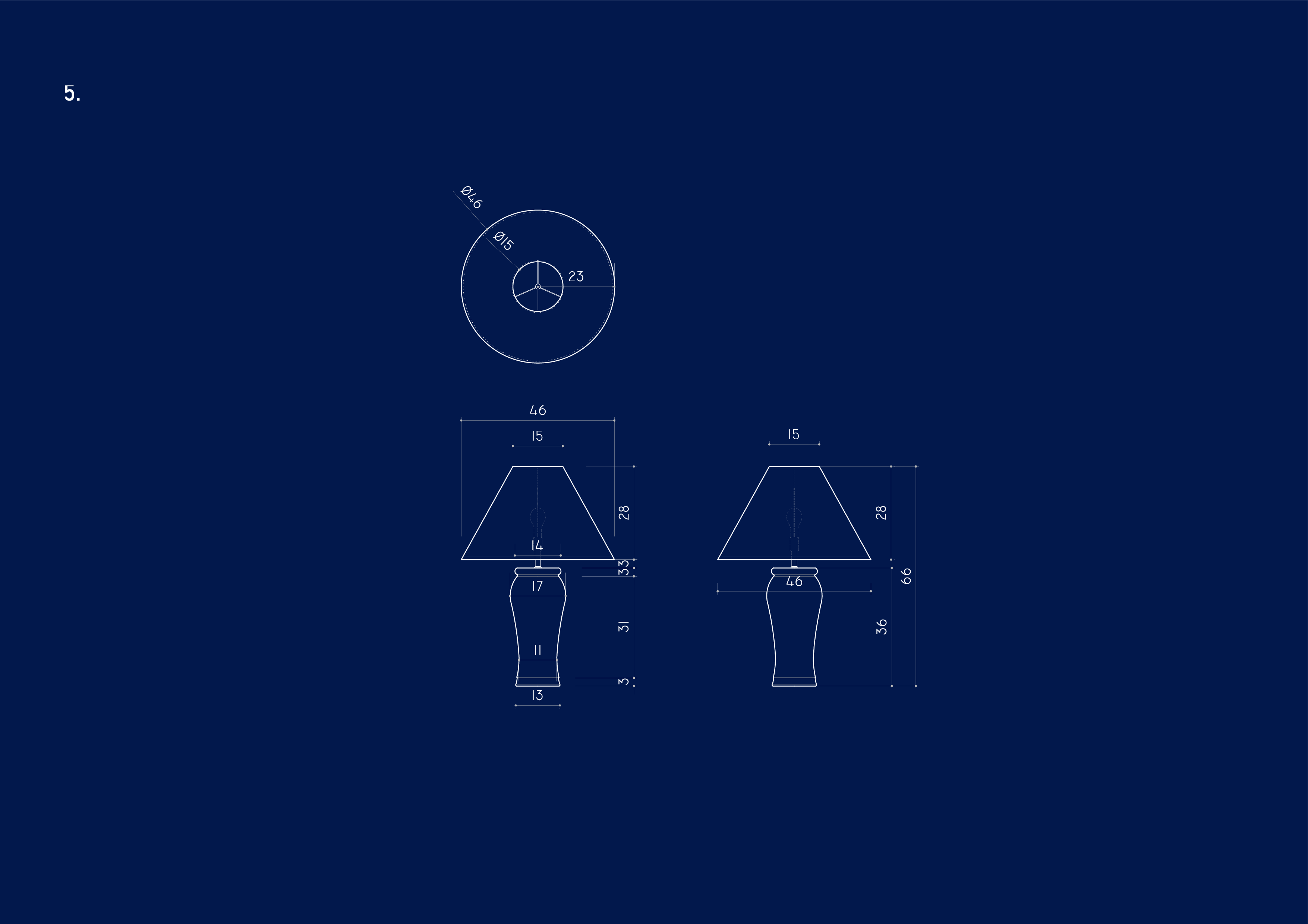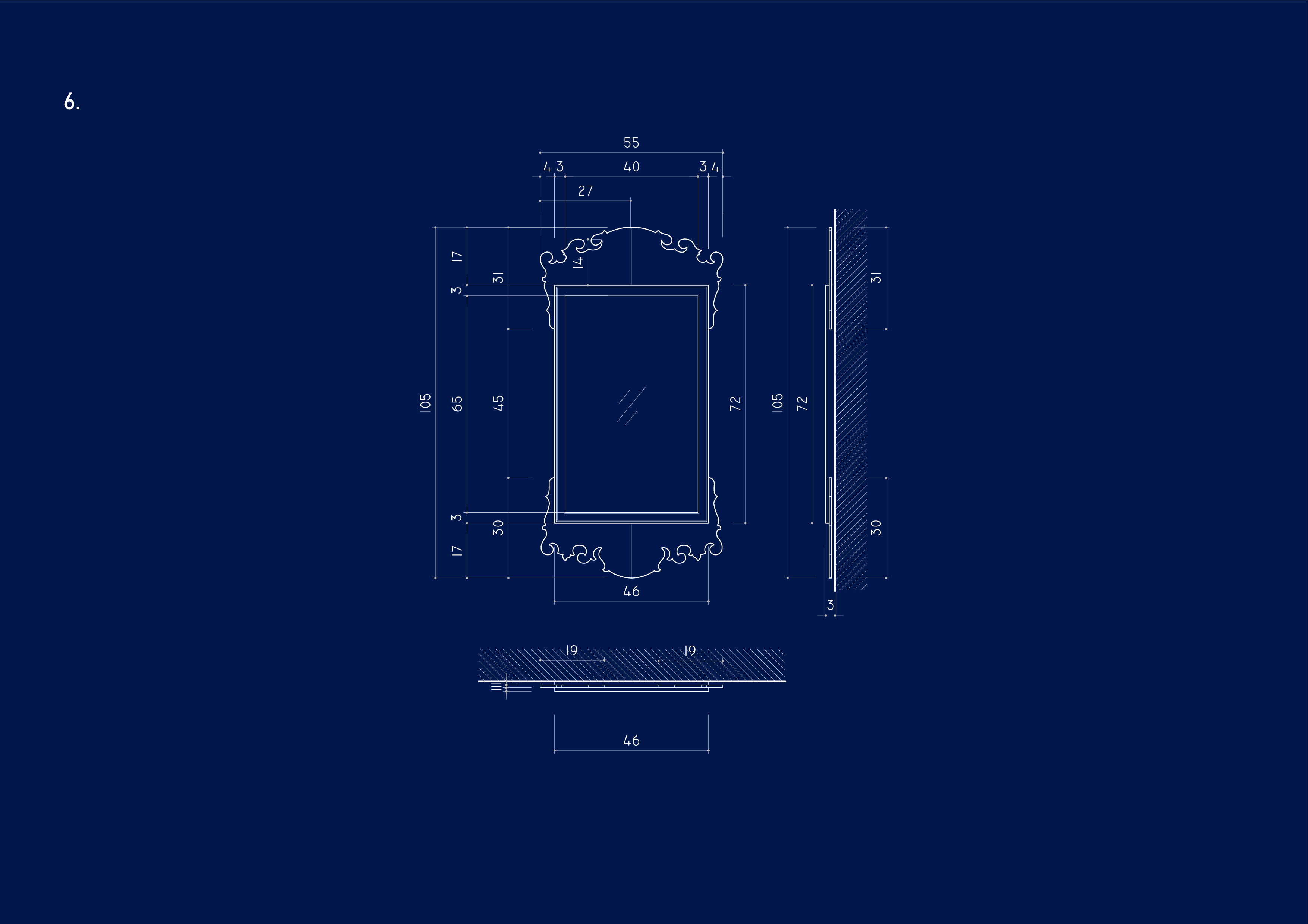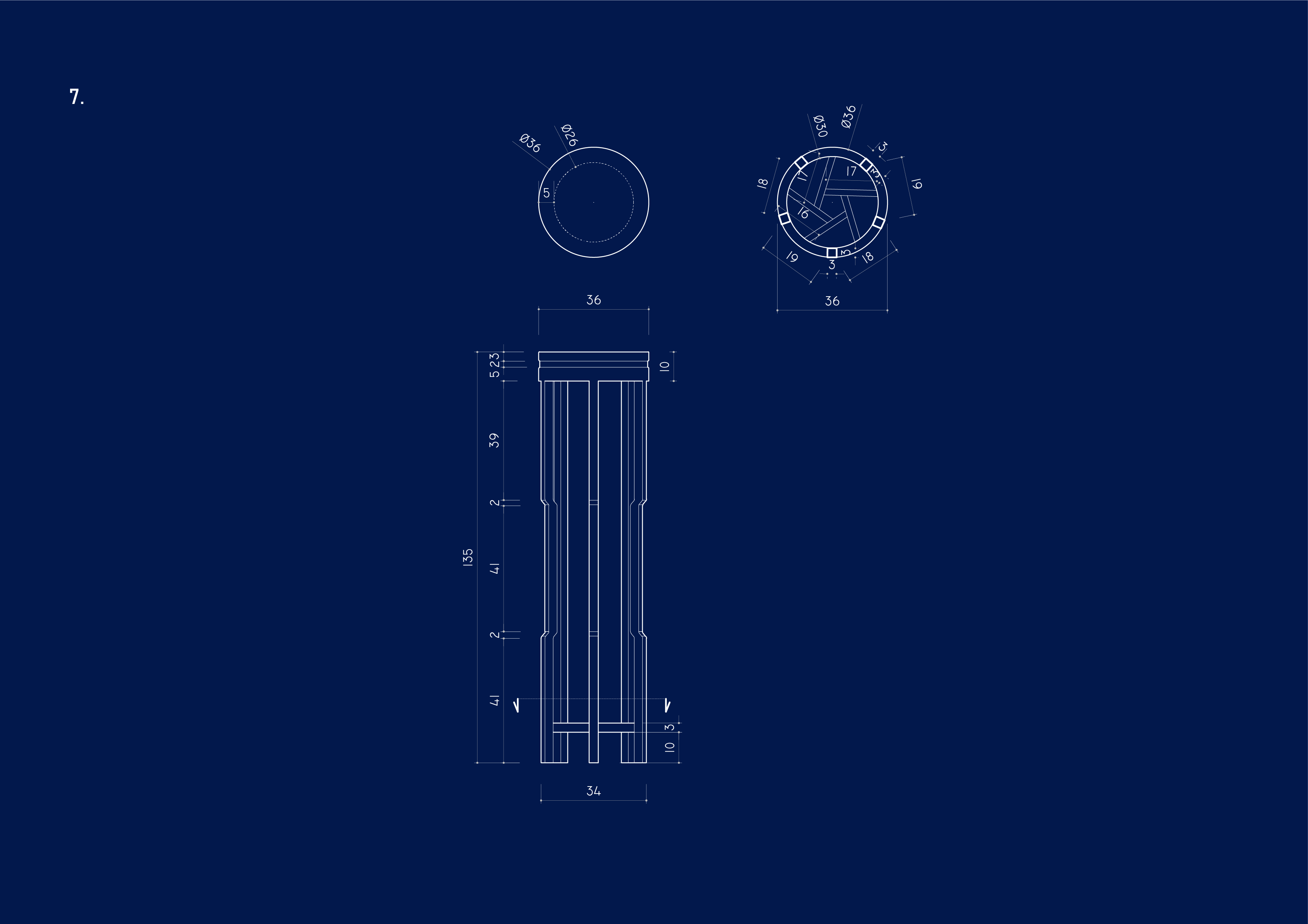La Société Spectrale, The House That Woodrow Built (SHTËPIA E VERDHË, TEATRI, AMBASADA), 2020-22
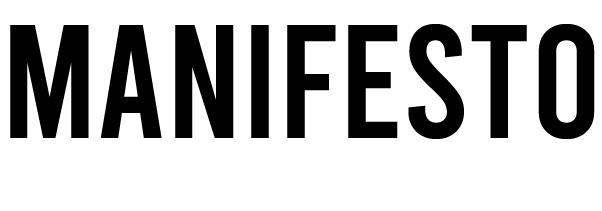
/The House That Woodrow Built
An exhibition by La Société Spectrale
(Armando Lulaj, Jonida Gashi, Pleurad Xhafa)
Curated by Vincent W.J. van Gerven Oei
“They have retroactive force and will constantly call into question
every victory, past and present, of the rulers. As flowers turn
toward the sun, by dint of a secret heliotropism the past strives to
turn toward that sun which is rising in the sky of history.”
– Walter Benjamin, Theses on the Philosophy of History, IV
“Haunting is historical, to be sure, but it is not dated.”
– Jacques Derrida, Specters of Marx
What does it mean to curate an exhibition with so many deaths?
This exhibition is a house not yet finished or already torn down, partially furnished or filled with remains. It is a building whose construction started at the supposed beginning of the end of history, the Versailles conference that cemented the world order that gave birth to the fascist paradigms of our delapidated present. Wilson, the white supremacist US president, nevertheless declared: “Albania ought to be independent.” It is a house that was destroyed and jacked back up in 1991 in a punchdrunk celebration of an imposed economic shock doctrine. Then again in 1997 as that doctrine collapsed under its own neoliberal weight. Collapse is the only constant.
This exhibition was conceived by the artist collective La Société Spectrale, a collective consisting of three artists: Armando Lulaj, Pleurad Xhafa, and Jonida Gashi. Its name is not accidental. From the clashing purification ceremonies – magical and anti-magical – that preceded its installation, to the evidence of the destruction of buildings, institutions, and states that comprises it, the exhibition follows a spectral logic. This spectral logic does not obey calendrical time, but a temporality dislodged from its hinges. It disregards historicist chronology or a linear chain of causality, but rather offers up untimely remains to a work of mourning. This is a work of “identifying the bodily remains and by localizing the dead” that continue to haunt Woodrow’s house, this rotten state.
Arrested in time, this exhibition does not contain artworks, archival records, or found objects; it contains evidence, albeit chronically contaminated. Stiff like dead bodies, the row of wooden roof beams rests against the wall facing the gallery entrance. They once belonged to the “Yellow House” in Gurrë, Burrel, a highly contested and questionable site of alleged war crimes against hundreds of Serbs and Kosovar collaborators during the Kosovo Liberation War. What they witnessed remains undetermined, and will most likely remain so despite the testimony of “three sources” who “unquestionably were physically present at the house.” What we are concerned with is the testimony of those who weren’t.
Objects from the National Theater, dispersed through space, carry the visible and invisible traces of the violent destruction with which the historical building, and the protesters occupying it, were met by the Albanian government during the height of the Covid-19 pandemic: a stagewheel, a curtain from one of the loges, a chair, and a drape used on stage. Also among them is the rump of a wooden boy, dismembered and castrated. Blindly he has hurled himself against wall, his back turned toward the past, “one single catastrophe which keeps piling wreckage upon wreckage.” But there is no longer a storm blowing from Paradise.
The angel’s back is turned toward the people, too, soldiers arranged in an anamorphic composition of liberty, an inverted Leviathan which does not constrain the war of all against all but rather releases it. Its technocratic, diplomatic facade, the US Embassy, unfurls in between, lifted in space by hydraulic car and railroad jacks. Its colonial furniture carries the traces of more recent violence. The glass of its cabinet is smashed by the letters of the dead, shaken off their gravestones. As the debris of US neoimperialist warfare continues to accumulate in Albania – kidnapped Al Qaeda affiliates, evacuated Mujahedin-e-Khalq members, Syrian chemical weapons, and airlifted Afghan refugees – these broken letters silently articulate a disjoined counterhistory.
This exhibition is a work of mourning. Curating it is an act of caring for the dead, and for those who live to remember. May this house, “The House That Woodrow Built,” be a home to them all.
– Vincent W.J. van Gerven Oei
In Memoriam W. (1956–2022)

